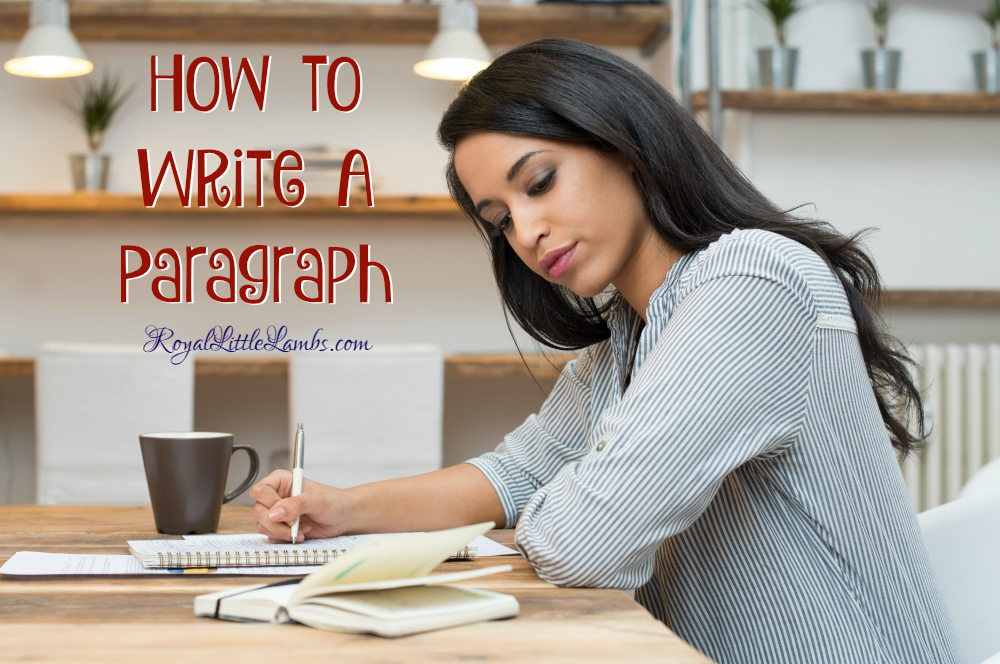When I entered university, I didn’t know how to write the typical 5-paragraph essay.
I vaguely remembered writing a literary research paper in 9th and again in 10th grade, with much hand-holding from the teacher, but I had a substitute teacher for my 11th and 12th grade years, so I basically sat in the back corner, by the window, and read poetry and classic novels. I started college early to escape.
In my second year or college, my Shakespeare professor kindly took me under his wing and tutored me in the essay format and I then took off with it, easily earning A’s in all my English courses.
I majored in literature, which was kind of a cop out and didn’t enable me to explore too many career options. I entered a 15-month master’s program to earn my M.Ed. and then I taught high school English for a few years. I moved on to teach college writing until we moved out of state and I had my babies.
Now I homeschool my four children. I don’t encourage formal writing until my kids are high school age. I don’t place a huge focus on typical English education. We read a lot and have lively discussions.
Essays are a bit more than a series of paragraphs thrown together. I explain the necessary parts of a well-written paragraph here.
Types of essays:
Most college essays require research and source citations. Different disciplines require different styles. I typically used MLA since I worked with literature. I love how easy these websites make generating source citations!
Citation Styles:
How to write an essay:

When I taught writing as a school teacher, I used to begin by pulling out an adorable copy of The Three Little Pigs and reading it aloud to the class.
Middle school, high school, college level. The students loved it and giggled, excited to be swept back to preschool storytime days.
It’s a well-known story, familiar and comfortable, so it takes the scary out of essay-writing when it’s so simplified.
After reading the book, I wrote on the board the outline format of the story.
The Three Little Pigs is a perfect 5-paragraph essay!
I. Introduction
II. Straw Pig
III. Stick Pig
IV. Brick Pig
V. Conclusion
Then, we would summarize the story together and I would jot down details on the outline.
Download a worksheet for summarizing The Three Little Pigs here.
Since I had to give grades and busy work to students in middle school and high school, I would assign them to quickly write up the summary in 5-paragraph format.
Then, we would segue into writing 5-paragraph essays on a variety of topics, working up to the dreaded literary analysis essay with citations and sources and references.
I like this handy dandy visual:

Review the format of a 5-paragraph essay:
- Determine a thesis.
This is a statement that serves as the premise to be maintained or proved throughout the essay.
When I teach essay writing to new writers, I make the formula easy: State the argument including the 3 supporting statements. Place the thesis at the end of the introduction paragraph. - At least 3 supporting statements.
These three statements become the three body paragraphs. I typically require a resource quote for each paragraph. - Introduction paragraph.
The introductory paragraph attempts to accomplish these three things:- Introduce the topic with some indication of its inherent interest or importance, and a clear definition of the boundaries of the subject area
- Indicate the structure and/or methodology of the essay, often with the major sections of the essay or its structural principle clearly stated
- State the thesis of the essay, preferably in a single, arguable statement with a clear main clause
- Conclusion paragraph.
A conclusion paragraph attempts to accomplish these three things:- It provides the reader with a sense of closure on the topic
- It demonstrates to the reader that you accomplished what you set out to do
- It shows how you have proved your thesis
- Works Cited page.
This is a formatted list of research sources on a separate page after the essay. Many teachers and professors are very particular about spacing and punctuation.
Thesis Examples:
The three little pigs thwarted the big, bad wolf.
Albrecht Durer as a Reformation artist utilized color, symbolism, and secular subjects in his art to express the Protestant values of his peers.
Alice Walker coined the term “Womanism” to unify strong women of color, give them a voice, and differentiate from the more white Feminist ideals.
Tips:
Eliminate “to be” verbs. In data processing programs, search for these and replace with active verbs.
Do not use “you” or “I.”
No slang.
No contractions.
Wikipedia is not a credible source.
Use 1 quote per body paragraph. Make sure to introduce it and support it. Place it in the middle of the paragraph.


